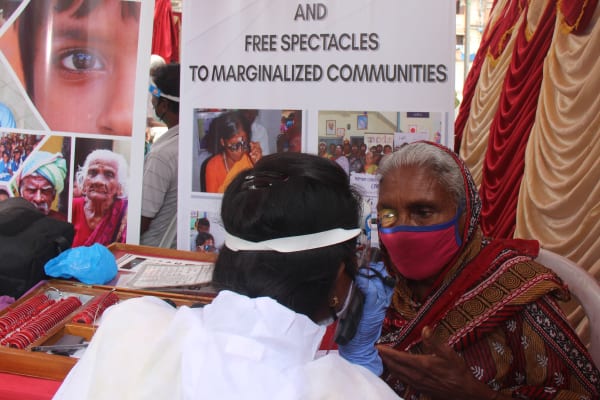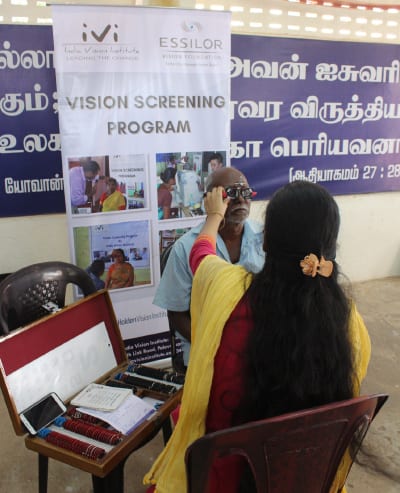Solving India's Cataract Crisis
Cataract is the second largest cause of vision loss worldwide. Globally, 100 million people face vision loss due to cataracts, of which 17 million are blind and 83 million have moderate to severe visual impairment. Women have a higher rate of cataract-related visual impairment and blindness. India faces a veritable cataract crisis that threatens to affect a large segment of the country’s population, especially the elderly, because of demographic factors. This pressing public health problem can be addressed by a combination of approaches, including the removal of barriers, capacity-building, raising awareness and ensuring that quality is prioritized in service delivery.
Panelists at an India Vision Institute (IVI)-VisionPlus Magazine hosted ‘Solving India's Cataract Crisis’ webinar, June 21, discussed this important public health issue. Moderated by IVI’s CEO, Vinod Daniel, the panel comprised Dr G V Rao, Development Specialist; Dr Arun Sethi, Ophthalmic Director, Arunodaya Deseret Eye Hospital, Managing Trustee, Arunodaya Charitable Trust; Dr Sumit Grover, Ophthalmologist, Academician and Public Health Professional; and Aaron Basaiawmoit, Chief Executive Officer, Bansara Eye Care Centre, North Eastern Zonal Representative and Board Member, Vision 2020 India.
Vinod Daniel got the session underway by describing the nature and magnitude of the cataract crisis in India. He observed that there are multiple challenges ranging from the backlog in cataract cases and the large number of un-operated patients to the demographic transition in the country which, as a result of higher life expectancy, has meant that India today has more elderly people than in the past.
Mr Daniel requested the panelists to identify the barriers hindering better access to cataract care in the country. There is a pronounced urban-rural divide in cataract care access. In rural areas, which tend to have lower literacy rates, the dearth of awareness and education is proving to be an impediment. According to Dr G V Rao, studies have shown that the illiterate population have higher rates of blindness. They are also less likely to opt for surgical treatment for cataracts, largely because of the lack of awareness and education. Surveys in rural areas have shown that even where people may be aware of cataract as an eye disease, the awareness of its symptoms is lacking. “Vision impairment is both a cause and a consequence of poverty,” noted Aaron Basaiawmoit. “It is related to poverty and it involves a mutual causality. People who are already poor often cannot access quality vision care. This leads to poor vision, which consequently hinders productivity and educational attainment and perpetuates the vicious cycle of poverty and vision impairment.”
In rural areas, the relatively low success rate of surgical procedures also inhibits more people from taking up treatment for cataract because of negative feedback from their relatives and friends. The existing service delivery capacity leaves much to be desired. The low density of optometrists and ophthalmologists, inadequate financing for eye care services, and the lack of integration of eye health programs into government health care systems are some other barriers that hinder access to cataract care.
“We need to look for long-term sustainable solutions to this challenge,” remarked Vinod Daniel. He asked the panelists to recommend measures to enable better outcomes in cataract care. “We need to move away from a silo-based approach to a more collaborative approach,” observed Dr Arun Sethi, “Bringing together all sectors of service delivery - corporate, NGO, and the government sectors - and pooling their resources to operate harmoniously will be beneficial.” A system that distributes technology and available manpower resources more evenly across the country can help address the urban-rural divide. This can be supplemented by holding training programs across the country. Regular upgradation of technology to modernize the eye care system, and encouraging tele-ophthalmology are sound ways of catering for the future.
“Community ownership of cataract treatment is important. Identify vision champions whose experiences can be highlighted as reasons to take up treatment for cataracts. This will make more patients take the initiative to come forward for surgery,” said Dr Sumit Grover. The panelists pointed out that while India has made remarkable strides in the number of cataract surgeries conducted, the quality of surgical procedures is often not adequate. The emphasis must shift from quantity to finding the right balance between quantity and quality.
Going forward, policymakers and practitioners need to be mindful of the many barriers that obstruct cataract care for millions of people in India. These barriers include limited access to eye care facilities and a general lack of awareness of the symptoms of the disease. Mr Daniel summarized a three-pronged approach to mitigate India’s cataract crisis, “Promote cataract awareness, detect the disease early, and intervene effectively with high quality treatment.”







